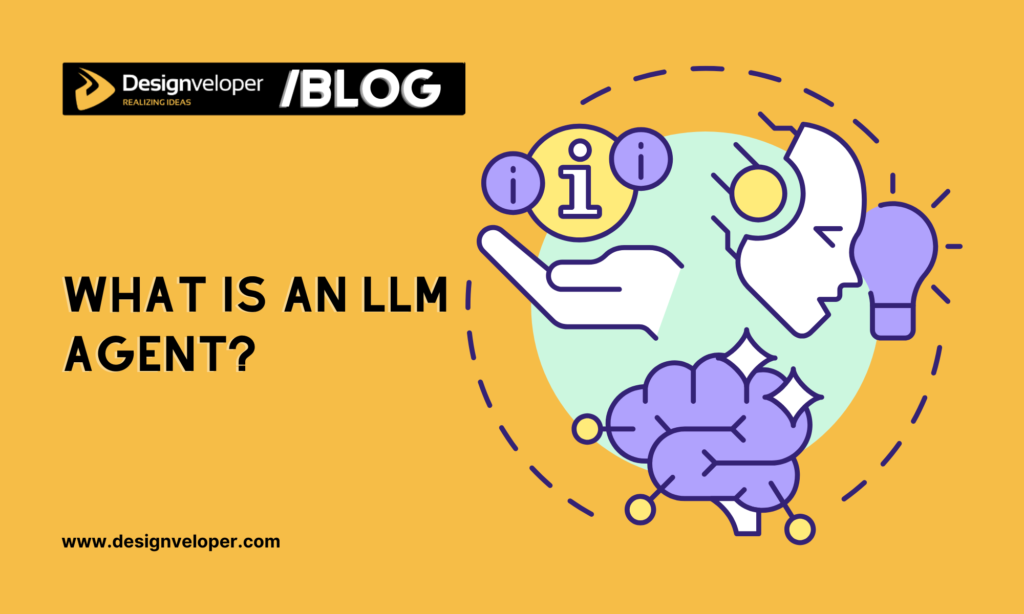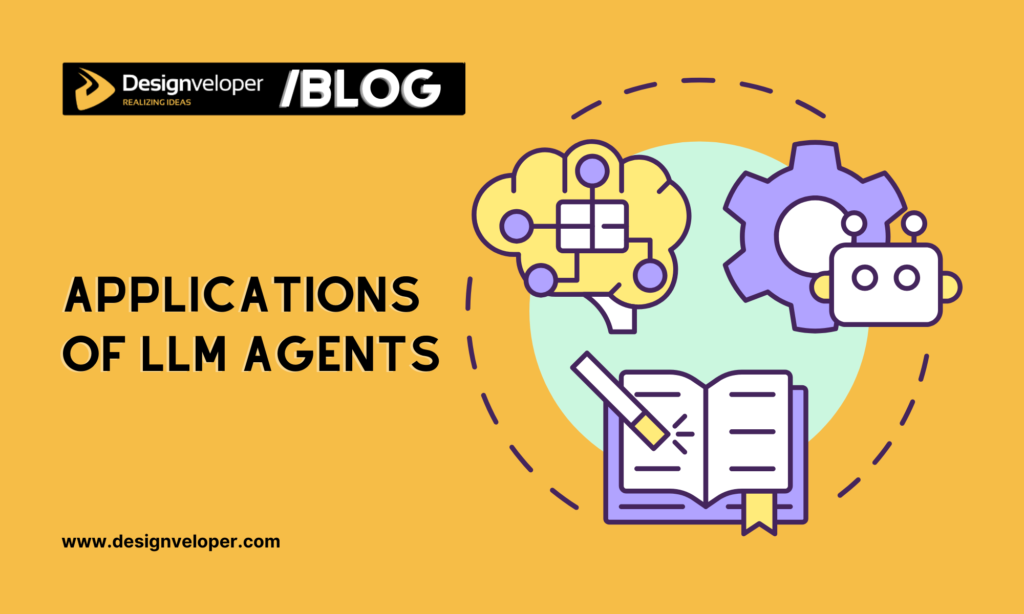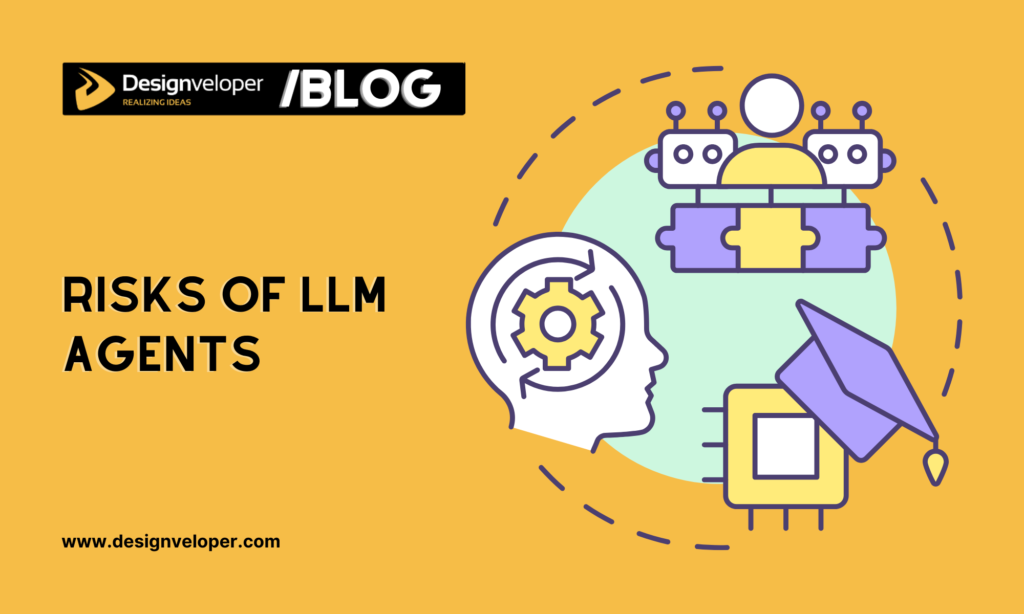LLM, short for Large Language Model, refers to an advanced AI model trained on vast amounts of data to understand and create natural language content. Some common LLMs you may know include OpenAI’s ChatGPT, Google’s Gemini, and Microsoft Copilot. LLM agents are often mistaken for LLM. These two concepts, however, are not the same. So, what is an LLM agent, exactly? This article will detail its core components, how it works, and its common applications in today’s era. Further, we’ll pinpoint several visible risks you should be aware of when using LLM agents. Let’s begin!
What is an LLM Agent?

An LLM agent is an advanced AI system using an LLM to reason, understand, and implement specific tasks. Imagine LLM agents as human beings and LLMs as their brains.
While LLMs like OpenAI’s ChatGPT mainly create text and images based on a natural language prompt, LLM agents are capable of doing more. In particular, they can break down complex problems into smaller, logical tasks and plan a series of actions to achieve the final goal. They can remember information from past interactions to generate personalized and contextual responses. Further, they can interact with external systems to extract information (e.g., searching the website), ‘communicate’ with other agents, and perform actions (e.g., using APIs to generate code).
Almost like human beings, LLM agents can refine their plans and outputs based on feedback. This allows them to make progress over time and achieve better outcomes.
LLM Agent’s Core Components
Our descriptions of an LLM agent’s capabilities somehow reveal its core components. They include Agent/Brain, Planning, Memory, and Tools. Let’s delve into each of them:
1. Agent
AGENT here means a large language model (LLM) itself. Serving as the brain, this LLM interprets user prompts, uses reasoning capabilities to decide what to do next, and then formulates appropriate actions. It also identifies when to use other components like planning, memory, and tools.
2. Planning
PLANNING here enables the agent to divide complex tasks into smaller, actionable steps and accomplish them.
The agent often uses two techniques, including Chain of Thought and Tree of Thought, to reason through tasks in a single path and multiple paths, respectively. However, the agent in this case has no capability to self-evaluate its plans or actions, which is often known as “planning without feedback.” So, human beings need to get involved in the plan reflection process to review, correct, and refine the plans.
Besides, there are still several agents that enable reflection methods like Reflextion and ReAct to reflect on failed attempts iteratively. These popular mechanisms allow them to replan and test their adjusted plans with minimal human intervention.
3. Memory
An LLM agent uses the MEMORY module to store all past interactions (e.g., thoughts or actions) between it and users.
There are two primary types of memory: short-term and long-term. The former covers all the information about the agent’s current session or task, while the latter includes all the past thoughts and behaviors that the agent needs to recall across sessions over the period.
4. Tools
TOOLS here are external systems (e.g., external APIs or plugins) that LLM agents can use to perform more than what the LLM knows.
For example, EduChat, an open-source LLM educational agent designed by Tsinghua University, can call a calculator to solve math problems or a diagram tool to draw a graph of a function.
So, LLM agents not only retrieve information from their training database to answer your questions. Beyond that, they can use tools like calculators, web searches, code interpreters, file readers, and more to extend their abilities and resolve complex problems.
How Does an LLM Agent Work?
Once you’ve understood those core components, it’s easier to know how LLM agents work. When you send an input prompt (e.g., “Can you summarize this report and translate it into German?”), the Agent (aka Brain) will receive the request.
Using an LLM, it continues to interpret the intent and context behind this prompt. If the task is multi-step or complex (e.g., “summarize and then translate”), the Agent will activate the Planning module and break down the task into two steps: 1) summarize and 2) translate. The Agent may use the Memory module to check to see, for example, which translation style you prefer (i.e., formal or informal).
Also, the Agent can leverage external tools if needed. For instance, it can call a translation API to produce more accurate German outcomes. After receiving the results from all these components, the Agent will assemble the final response and return it to you.
Applications of LLM Agents [With Examples]

With their immersive capabilities, LLM agents can bring lots of benefits to businesses. Accordingly, they can autonomously execute complex tasks (e.g., creating project plans or writing code) and offer consistent, personalized responses thanks to their ‘memory’. This frees humans from manual, time-consuming tasks, enhancing their productivity and decision-making. For this reason, LLM agents are widely adopted across industries. Below are several applications of these agents:
Customer Support Automation
LLM agents function as intelligent customer service representatives working around the clock. They’re responsible for answering FAQs, addressing common issues, summarizing customer history using CRM tools, routing conversations to the right human agents if needed, and more.
One typical example of LLM agents for customer service is Intercom’s Fin. Powered by OpenAI’s GPT-4 and Intercom’s proprietary technology (the Fin AI EngineTM), Fin has the capabilities of providing high-quality answers and handling more complex queries. You can customize Fin for different platforms like Intercom, Zendesk, or Salesforce in alignment with your company’s existing workflows. With Fin, you can automate workflows, resolve support tickets, and handle omnichannel interactions (e.g., emails, live chats, or SMS).
Software Engineering
LLM agents help developers by automatically generating and refactoring code. They can debug applications, interpret documentation, and even use external systems like GitHub or IDEs for running tests, managing repositories, and more.
One typical example of LLM agents in software engineering is Devin. This smart assistant helps you modernize your codebase, fix thousands of lint errors, manage CI/CD pipelines, write & run unit or end-to-end tests, onboard new repos, generate documentation, and more. It also supports your data teams in migrating data warehouses, processing raw data, and developing ETL pipelines.
Besides, it can learn your codebase and retrieve valuable, yet unwritten knowledge. It can even integrate with external tools, like GitHub or Linear. With GitHub, for example, Devin can independently create or review PRs (pull requests) and respond to PR comments. Meanwhile, Devin can automatically work on Linear tasks when being mentioned or delegated with tasks in Linear.
Sales & Lead Management
LLM agents play a crucial role in assisting sales and lead outreach. Accordingly, they aid in finding, attracting, and converting leads into closed deals. Further, they help plan outreach strategies, draft and send emails automatically to the right leads at the right time, and more.
One typical example of LLM agents for sales and lead management is RegieOne. This AI-native sales engagement agent supports all prospecting tasks, from lead acquisition and warming to prospecting. In particular, it autonomously finds and enriches ICP (Ideal Customer Profile) contacts to give human reps actionable lead data without manual effort. It also adjusts messaging, timing, and channels in real time to make all interactions smarter and help sales reps focus on the most crucial tasks.
Further, the AI also automatically sends cross-platform messages (e.g., email or social media) to potential customers. Once leads show their intent (e.g., by clicking a link), it’ll generate priority call tasks for reps.
Besides, you can set rules and triggers to automatically add leads to a new outreach action or remove them from campaigns based on their engagement behavior. The AI also analyzes how effective your messages are to help you refine your strategies accordingly.
Research & Knowledge Management
LLM agents help researchers and R&D teams gather, review, summarize, and organize knowledge from different sources.
One typical example of LLM agents in research assistance is Elicit. It automates mundane, time-consuming tasks like summarizing research papers, retrieving data, and assembling key findings. Additionally, the AI agent offers Elicit Reports, which discovers the most crucial papers in a field and their most important information. Elicit Reports can also trace a particular statement to the exact quote from a research paper.
Bonus: Domain-Specific Applications
Besides the above common applications, LLM agents are assigned domain-specific roles. Below are some notable LLM agent examples:
- EduChat is an LLM-powered educational assistant. It provides maths explanations, customizes your learning path based on your objective, and helps with coding.
- Harvey is a professional AI assistant for law firms. It analyzes your documents and answers your complex questions about regulatory, legal, and tax issues. You can use pre-built agents or build your own and delegate complex tasks to them (like drafting and revising long-form content).
- Glass Health supports clinical decisions and documentation. Accordingly, it offers evidence-backed consulting responses based on a clinician’s question. It also aids in differential diagnoses (that means listing various possible causes of a patient’s symptoms), assesses the patient’s conditions, and plans what to do next. Further, it combines EHR data with ambient conversations to generate History & Physical (H&P) exam notes. It also drafts discharge instructions and handouts for patients.
Considering Risks of LLM Agents

LLM agents are beneficial to various sectors, from healthcare and legal services to software engineering and customer services. However, it doesn’t mean they have no limitations. Until now, LLM agents, although powered by advanced AI technologies to obtain surprising achievements, still present some challenges.
- Limited planning and context length. Planning and memorizing information from past user interactions remains a daunting task for LLM agents. In comparison, they still work more reliably when depending on short-term memory. Due to limitations in context length, these agents may forget previous conversations and repeat earlier mistakes when conducting extended tasks.
- Alignment with human values. In some applications, like customer service, users expect agents to behave ethically and respond appropriately to context. This expectation is even higher in sensitive sectors like healthcare, where one mistake can cause a significant impact. Therefore, besides domain knowledge, the staff need social skills to interact in the right manner. However, it’s still hard for LLM agents to act in alignment with this expectation.
- Output reliability. LLM agents use their training data and external tools to deliver responses. They’re highly capable of extracting data, interpreting your prompts, and reasoning to produce relevant answers to your questions. But what if the training data or external tools contain incorrect, ambiguous, or outdated information? LLM agents, as a result, may get confused and create made-up or false answers.
- Efficiency and cost. LLM agents often divide complex tasks into smaller steps and send various requests to the underlying LLM to reason, plan, and more. More complex tasks often translate to more prompts needed to process. This will slow down the response speed of the LLM and cost more money for processing.
Final Words
Despite those challenges, LLM agents still keep thriving as a result of the booming of LLM these days. One research study has shown that the global LLM market will increase annually by 36.9% from 2025 to 2030, with the dominance of integrating this technology into chatbots and virtual assistants. Coupled with the growing demand for specific tasks across organizations, we predict more and more LLM agents will appear with higher intelligence and more efficient performance.
Do you want to build an LLM-powered agent for your team? Designveloper is here to help. Our excellent team of engineers has deep technical expertise and experience in using and refining LLMs to develop scalable agents. We also specialize in integrating smart chatbots into your current systems to streamline workflows and enhance user experiences. Contact us and discuss your idea further to receive a free estimation!


